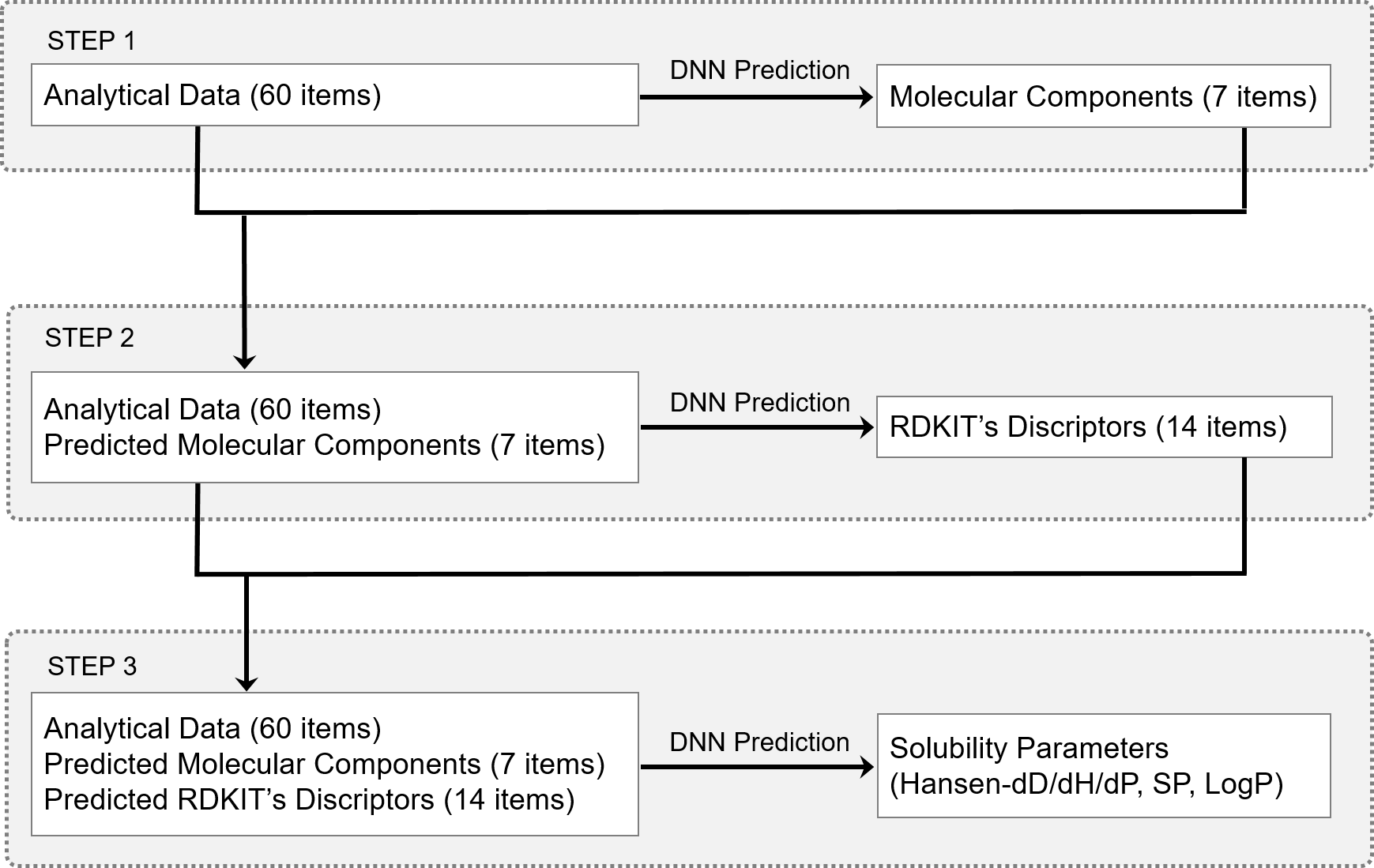![]() About
About
MatSolCa (MSC) is a free access and usefull Materials informatics tool as Solubility Calculater with in-phases deep neural network which is our special method of 3-step DNN.
![]() Prediction Information
Prediction Information
|
| |
| No of total compounds | General 307 low molecular weight compounds |
| No of C atoms/compound | 1–9 |
| M.W. | 32.0–252.7 (ave. 98.6) |
| Solubility data | HSPs (δD, δH, δP), SP & LogP |
| Analytical data | H/C-NMR assignments, density & refractive index |
| Molecular data | Molecular components (7 items) & RDKIT's descriptors (14 items) |
| Downlaod |
dataset
|
|
| |
| Algorithm | in-phases (3-step) deep neural network |

| |
| Validation method | 5-division cross-validation |
| Hyper parameter selection | Bayesian optimization method |
| R2 | δD:0.81, δH:0.61, δP:0.61, SP:0.58, LogP:0.69 |
| RMSE | δD:0.51, δH:3.00, δP:2.16, SP:1.85, LogP:0.59 |
![]() MSC in Brief
MSC in Brief
![]() Policy
Policy
Copyright license agreement on this webpage must be in accordance with CC BY-NC.
![]() Created by
Created by
Dr. Jun Kikuchi (Supervisor)
Dr. Atushi Kurotani (Developer of ML & Web)